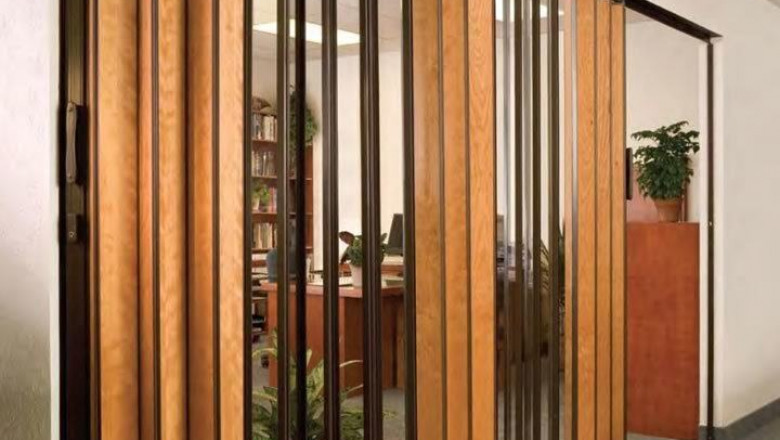views
In today’s fast-paced and space-conscious world, the need for adaptable and multifunctional spaces has grown tremendously. Whether in corporate environments, educational institutions, hospitality venues, or even residential settings, there is an increasing demand for flexible spatial solutions. One such smart, stylish, and efficient solution is the sliding partition wall.
What Is a Sliding Partition Wall?
A sliding partition wall is a movable wall system designed to divide interior spaces without the need for permanent construction. These partitions are mounted on tracks, usually suspended from the ceiling or set on the floor, and can be easily opened or closed to adjust space configurations as needed.
They are widely used to:
-
Create temporary rooms or sections
-
Improve privacy and noise control
-
Maximise usable floor space
-
Enhance the aesthetic appeal of interiors
Sliding partitions combine functionality with modern design, making them a popular choice for both commercial and residential spaces.
Advantages of Sliding Partition Walls
1. Space Optimisation
One of the biggest advantages of sliding partitions is their ability to make the most out of available space. They allow you to open up a large area for group activities or divide it into smaller sections for private meetings, quiet work, or focused tasks. This flexibility is invaluable in urban settings where space is limited.
2. Easy Operation and Accessibility
These partitions are designed to be user-friendly. Whether manual or automatic, they can be easily moved along their tracks with minimal effort. Some systems even come with soft-close mechanisms or motorised features for enhanced convenience.
3. Enhanced Aesthetics
Modern sliding partitions are available in various finishes, including glass, laminate, fabric, and wood veneer. This allows designers and architects to match the partitions with the overall décor of the room, maintaining a cohesive and professional look.
4. Acoustic Control
With the option to integrate acoustic insulation materials, sliding partition walls can significantly reduce noise transmission between divided spaces. This makes them ideal for office meeting rooms, conference halls, and educational facilities where sound control is essential.
5. Cost-Effective and Non-Invasive
Unlike traditional construction, installing a sliding partition does not require major renovation work. This not only saves time but also reduces the cost of altering layouts compared to building permanent walls.
Types of Sliding Partition Walls
There are several types of sliding partitions to suit different needs and architectural styles:
1. Single Sliding Partitions
These partitions slide in one direction and are ideal for small to medium-sized spaces. They are compact and simple to operate.
2. Telescopic Sliding Walls
Used in larger rooms, telescopic systems feature multiple panels that slide behind each other, offering a wider opening when retracted.
3. Sliding Glass Partitions
Perfect for modern office environments, sliding glass partitions create separation without obstructing visibility or natural light. Frosted or tinted options can also be used for privacy.
4. Acoustic Sliding Partitions
These are engineered with internal soundproofing materials, designed for environments that require superior noise isolation like auditoriums and boardrooms.
Applications of Sliding Partition Walls
Sliding partition walls have a broad range of applications across different sectors:
-
Corporate Offices: For creating dynamic workspaces, temporary meeting rooms, or break areas.
-
Education: In schools and universities to transform classrooms into multi-purpose spaces.
-
Healthcare: For flexible patient management areas or private consultation rooms.
-
Hospitality: In hotels and restaurants to divide dining areas for private events.
-
Residential: For open-plan homes to create guest rooms, home offices, or quiet zones.
Materials Used in Sliding Partition Walls
The choice of material impacts both the function and appearance of the partition:
-
Glass: Offers transparency and modern aesthetics.
-
Wood or Veneer Panels: Provides warmth and elegance.
-
Metal Frames: Offers structural strength and a sleek, industrial look.
-
Fabric-Wrapped Panels: Often used in acoustic partitions for sound absorption.
-
Composite Panels: Lightweight and durable for easy mobility.
Each material can be chosen based on budget, functionality, and interior design goals.
Installation and Maintenance
Professional installation ensures smooth operation, long-term performance, and safety. Key considerations include:
-
Track System: Ceiling-mounted tracks are more discreet but require structural support. Floor-mounted systems are easier to install but may impact floor continuity.
-
Panel Alignment: Precise alignment is crucial for smooth sliding and tight seals.
-
Locking Mechanism: To secure the partition in place when closed.
-
Maintenance: Most sliding partition walls require minimal maintenance—periodic cleaning and occasional lubrication of tracks are sufficient.
Conclusion
A sliding partition wall is a modern and efficient way to adapt your interiors to changing needs. Whether you're looking to enhance privacy, manage noise, or simply make better use of your space, these movable walls offer a versatile and cost-effective solution. Their growing popularity across sectors is a testament to their practicality and design appeal.
As businesses and homeowners alike seek more flexibility in their environments, sliding partitions are proving to be more than a trend—they’re a necessity for functional, smart living and working.














Comments
0 comment